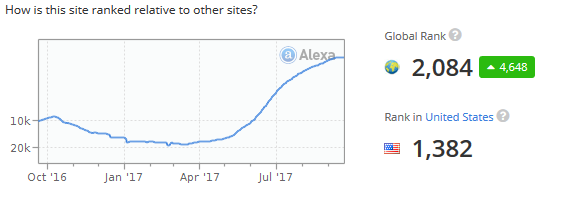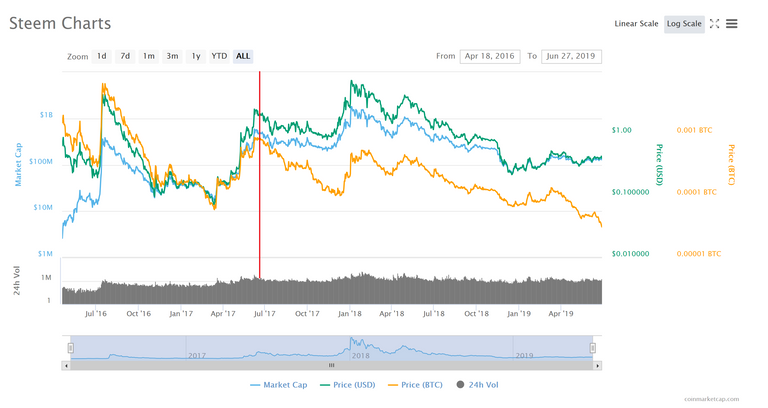I'm not saying there is a causation in regard to those 2 metrics but these 2 fundamental trends were up before the linear rewards were introduced.
Linear rewards were introduced in June 2017.


I'm not saying there is a causation in regard to those 2 metrics but these 2 fundamental trends were up before the linear rewards were introduced.
Linear rewards were introduced in June 2017.


What you are missing is that for several weeks prior to the linear hard fork, linearity (or at least a very strong attenuation of n^2) was largely in effect already due to the 'whale experiment'. Whatever gains you are seeing there, to the extent they have any tie to the payouts, would correspond with getting rid of n^2, first by whale voting changes and later by the fork itself.
Also, IIRC one of the forks (I don't remember which one) botched the payout pool logic and resulting in there being hardly any payouts for a month or so. That may also have helped the price, but can hardly an endorsement of n^2, or even paying rewards at all.
These are your assumptions.
The whale experiment isn't linear rewards. These 2 are different.
Yes, those are my assumptions because that was a premise upon which the whale experiement was based (abit did some math and determined how low votes needed to be to largely stay out of the most superlinear part of the curve). The overall effect, while not perfect, was to dramatically reduce the vshares in the pool and therefore increase the weighting on smaller payouts. It is very similar to the effect of linear or convergent linear.
The biggest problem with the whale experiment was the high cost of the downvotes, and indeed that is probably the biggest flaw in the original white paper design, and likewise also in the assumptions that went into switching to linear (that people would downvote, retaining what is effectively a non-linear curve, and avoiding the self-rewarding issue with linear raised by the white paper). Since downvotes are too expensive, that didn't happen (more then 0.01% of the time at least). Everywhere you look, expensive downvotes are a problem.
With cheaper downvotes, any curve works a lot better. Without them, any curve works poorly.
Whether the upcoming changes will make downvotes cheap enough remains to be seen. Social stigma, retaliation, and uncompensated effort may still impose too high a cost.
It was very different. The day the fork happened the change in the payout made this very clear.
Disagree. There were some differences in particular payouts yes, but the payouts before the experiment were in a different universe altogether.
Let me ask you another question. If n^2 as proposed in the original white paper was such a great thing then why is no one going and creating a new system using it? Why is Voice not using it?
I doubt I will be able to convince you but most rational people, probably including Dan, have concluded that the original Steem white paper just got a lot wrong (not even necessarily a lot of separate things, but the things it got wrong are very important). It was a legitimate and mostly credible attempt, but after trying things we learn from them, at least most of us do.
I've been saying that I'm of pretty much in favor of any curve that gets us away from linear. I never said n^2 was the best.
Ah, fair enough.